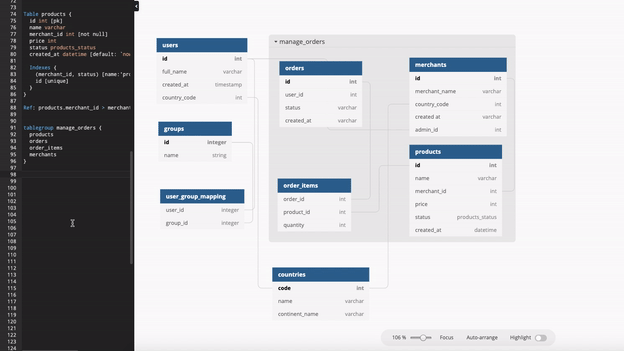🔑 Support Composite Foreign Key
dbdiagram now support composite foreign key!
Syntax
//Long form
Ref name_optional {
table1.(column1, column2,...) [<|>|-] table2.(columnA, columnB,...)
}
//Short form:
Ref name_optional: table1.(column1, column2,...) [<|>|-] table2.(columnA, columnB,...)
Example
Table user {
id int
country_code int
}
Table account {
user_id int
country_code int
}
Ref: user.(id, country_code) - account.(user_id, country_code)







